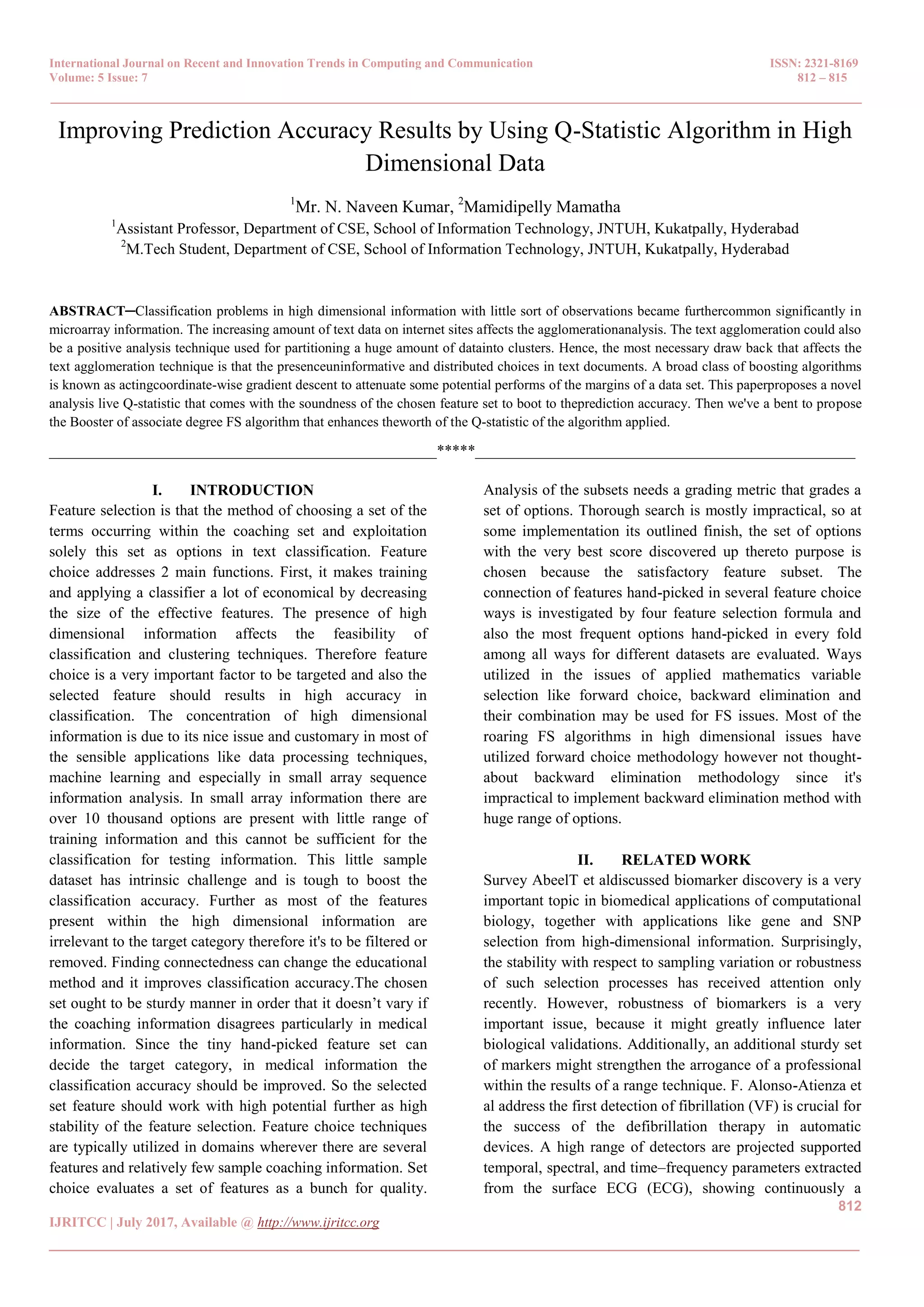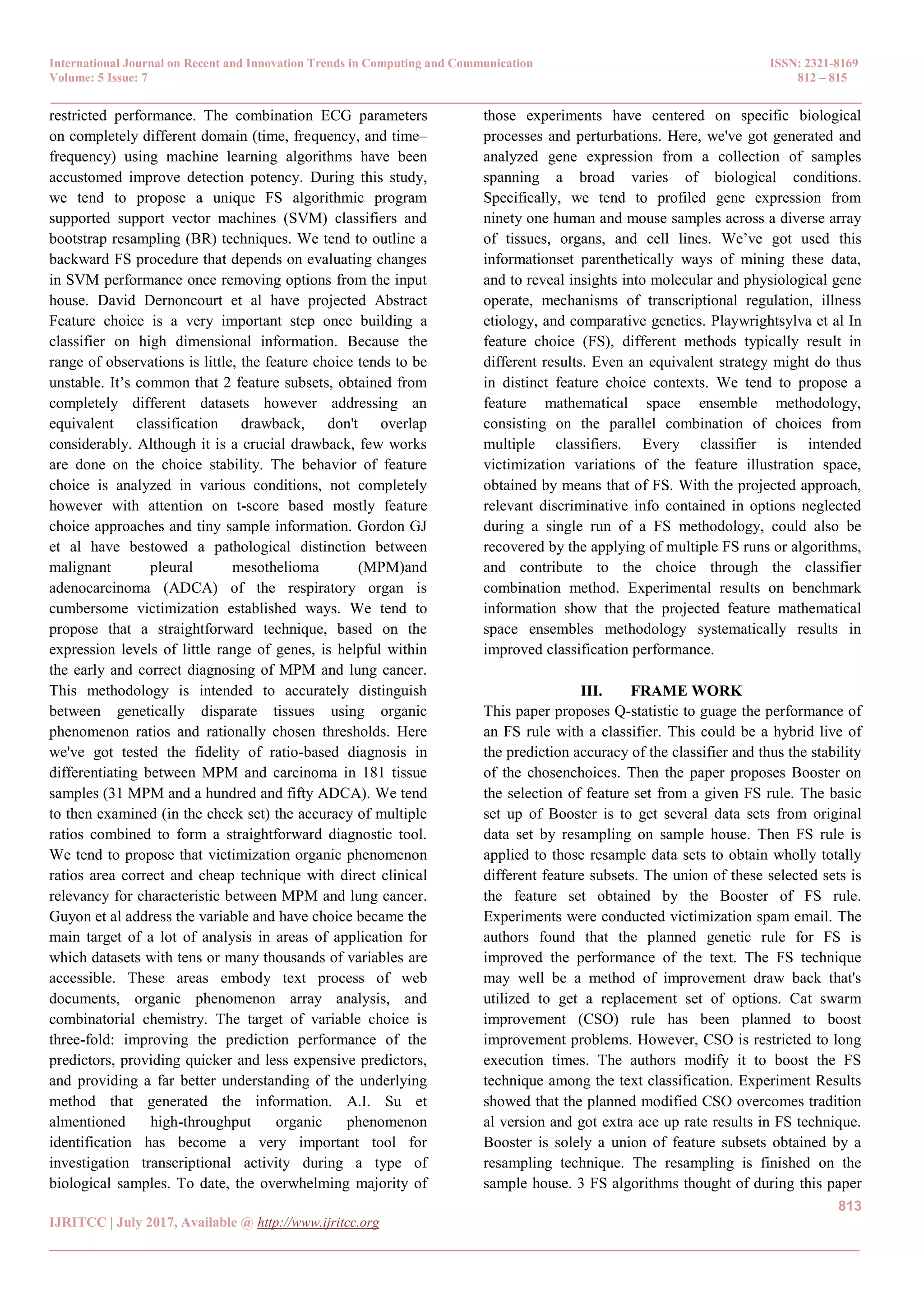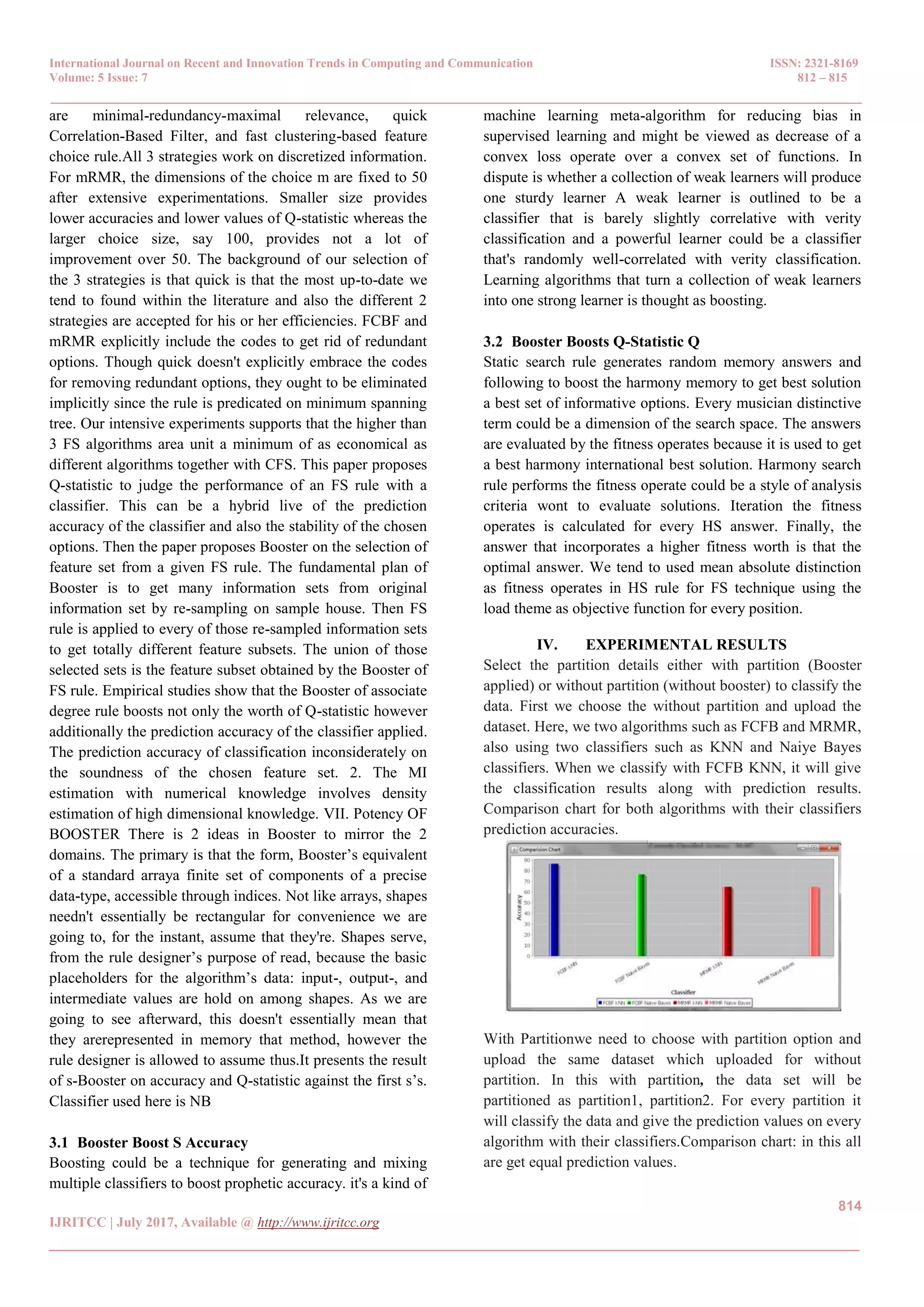This document discusses improving prediction accuracy in high-dimensional data classification using a novel Q-statistic algorithm combined with feature selection (FS) methods. The proposed booster technique enhances the performance of FS algorithms by applying resampling to generate unique feature subsets, ultimately leading to improved accuracy in classification tasks. The results demonstrate that this method successfully tackles challenges related to feature stability and classification accuracy in contexts such as biomedical data analysis.



![International Journal on Recent and Innovation Trends in Computing and Communication ISSN: 2321-8169 Volume: 5 Issue: 7 812 – 815 _______________________________________________________________________________________________ 815 IJRITCC | July 2017, Available @ http://www.ijritcc.org _______________________________________________________________________________________ 5. CONCLUSION Here Q-statistics evaluates the performance of FS algorithmic rule is for each stability for selected subset and classification accuracy. The essential reason for up accuracy is that the boostingtechnique. The experimental result shows that booster improves the accuracy forclassification. It had been ascertained that FS algorithm is efficient for selecting feature set however don't improve the accuracy value for a few information sets. Thus boosting is completed before featureselection and increasing the value of b i.e., the amount of partitions, results in increasingaccuracy value. REFRENCES [1] T. Abeel, T. Helleputte, Y. V. de Peer, P. Dupont, and Y. Saeys, “Robust biomarker identification for cancer diagnosis with ensemble feature selection methods,” Bioinformatics, vol. 26, no. 3, pp. 392–398, 2010. [2] D. Aha and D. Kibler, “Instance-based learning algorithms,” Mach. Learn., vol. 6, no. 1, pp. 37–66, 1991. [3] S. Alelyan, “On feature selection stability: A data perspective,” PhD dissertation, Arizona State Univ., Tempe, AZ, USA, 2013. [4] A. A. Alizadeh, M. B. Eisen, R. E. Davis, C. M. Izidore, S. Lossos, A. Rosenwald, J. C. Boldrick, H. Sabet, T. Tran, X. Yu, J. I. Powell, L. Yang, G. E. Marti, T. Moore, J. H. Jr, L. Lu, D. B. Lewis, R. Tibshirani, G. Sherlock, W. C. Chan, T. C. Greiner, D. D. Weisenburger, J. O. Armitage, R. Warnke, R. Levy, W. Wilson, M. R. Grever, J. C. Byrd, D. Botstein, P. O. Brown, and L. M. Staudt, “Distinct types of diffuse large B-cell lymphoma identified by gene expression profiling,” Nature, vol. 403, no. 6769, pp. 503– 511, 2000. [5] U. Alon, N. Barkai, D. A. Notterman, K. Gish, S. Ybarra, D. Mack, and A. J. Levine, “Broad patterns of gene expression revealed by clustering analysis of tumor and normal colon tissues probed by oligonucleotide arrays,” Proc. Nat. Acad. Sci., vol. 96, no. 12, pp. 6745–6750, 1999. [6] F. Alonso-Atienza, J. L. Rojo-Alvare, A. Rosado-Munoz, J. J.~ Vinagre, A. Garcia-Alberola, and G. Camps-Valls, “Feature selection using support vector machines and bootstrap methods for ventricular fibrillation detection,” Expert Syst. Appl., vol. 39, no. 2, pp. 1956–1967, 2012. [7] P. J. Bickel and E. Levina, “Some theory for Fisher’s linear discriminant function, naive Bayes, and some alternatives when there are many more variables than observations,” Bernoulli, vol. 10, no. 6, pp. 989–1010, 2004. [8] Z. I. Botev, J. F. Grotowski, and D. P. Kroese, “Kernel density estimation via diffusion,” The Ann. Statist., vol. 38, no. 5, pp. 2916– 2957, 2010. [9] G. Brown, A. Pocock, M. J. Zhao, and M. Lujan, “Conditional likelihood maximization: A unifying framework for information theoretic feature selection,” J. Mach. Learn. Res., vol. 13, no. 1, pp. 27– 66, 2012. [10] C. Kamath, Scientific data mining: a practical perspective, Siam, 2009.](https://image.slidesharecdn.com/153150183876904-08-2017-180102130752/75/Improving-Prediction-Accuracy-Results-by-Using-Q-Statistic-Algorithm-in-High-Dimensional-Data-4-2048.jpg)